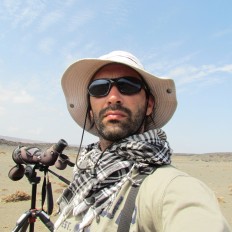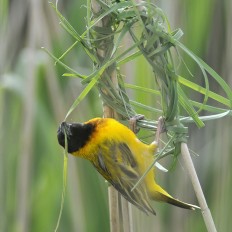Top species
- Greater Flamingo (Phoenicopterus roseus)
- Western Swamphen (Porphyrio porphyrio)
- Black-winged Stilt (Himantopus himantopus)
- Pied Avocet (Recurvirostra avosetta)
- Kentish Plover (Anarhynchus alexandrinus)
- Collared Pratincole (Glareola pratincola)
- Audouin's Gull (Ichthyaetus audouinii)
- Purple Heron (Ardea purpurea)
- Eurasian Spoonbill (Platalea leucorodia)
- Osprey (Pandion haliaetus)
- Western Marsh Harrier (Circus aeruginosus)
- Bluethroat (Luscinia svecica)
List up to ca. 25 species that:
• have a limited distribution range and/or are rare on a global level
• are most sought-after by birdwatchers at this site
• and are relatively easy to see at this site (year-round or seasonally)
| Greater Flamingo (Phoenicopterus roseus) | |
| Western Swamphen (Porphyrio porphyrio) | |
| Black-winged Stilt (Himantopus himantopus) | |
| Pied Avocet (Recurvirostra avosetta) | |
| Kentish Plover (Anarhynchus alexandrinus) | |
| Collared Pratincole (Glareola pratincola) | |
| Audouin's Gull (Ichthyaetus audouinii) | |
| Purple Heron (Ardea purpurea) | |
| Eurasian Spoonbill (Platalea leucorodia) | |
| Osprey (Pandion haliaetus) | |
| Western Marsh Harrier (Circus aeruginosus) | |
| Bluethroat (Luscinia svecica) |
Collared Pratincole (Glareola pratincola) was added by Guillaume Rethore (2021-07-21 14:36:54)
Kentish Plover (Anarhynchus alexandrinus) was added by Guillaume Rethore (2021-07-21 14:36:36)
Osprey (Pandion haliaetus) was added by Guillaume Rethore (2021-07-21 14:36:15)
Pied Avocet (Recurvirostra avosetta) was added by Guillaume Rethore (2021-07-16 15:09:50)
Black-winged Stilt (Himantopus himantopus) was added by Guillaume Rethore (2021-07-16 15:09:41)
Audouin's Gull (Ichthyaetus audouinii) was added by Guillaume Rethore (2021-07-16 15:09:31)
Purple Heron (Ardea purpurea) was added by Guillaume Rethore (2021-07-16 15:09:20)
Western Marsh Harrier (Circus aeruginosus) was added by Guillaume Rethore (2021-07-16 15:09:09)
Bluethroat (Luscinia svecica) was added by Guillaume Rethore (2021-07-14 14:58:04)
Western Swamphen (Porphyrio porphyrio) was added by Guillaume Rethore (2021-07-14 14:57:53)
Eurasian Spoonbill (Platalea leucorodia) was added by Guillaume Rethore (2021-07-14 14:57:38)
Greater Flamingo (Phoenicopterus roseus) was added by Guillaume Rethore (2021-07-14 14:57:28)




